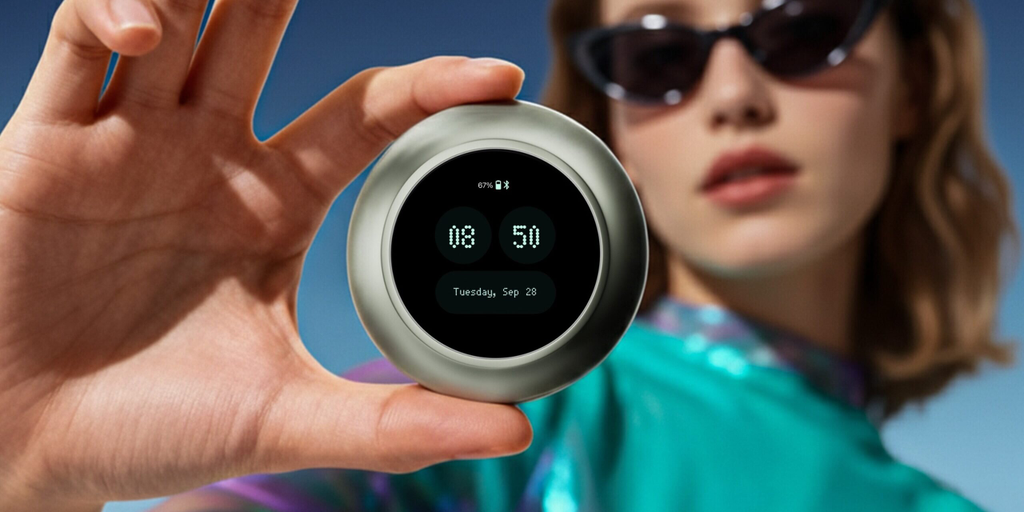A Passwordless Bitcoin Wallet That Reads Your Veins: Inside G‑Knot’s Biometric Bet
G‑Knot debuts a $299, passwordless hardware wallet that unlocks with finger vein biometrics and local zero‑knowledge proofs. Presale opens today; ships in January.

Because Bitcoin
November 19, 2025
Self-custody without a seed phrase
Crypto custody has a design problem: security steps often clash with usability. G‑Knot targets that friction with a hardware wallet that replaces PINs and seed phrases with finger vein biometrics and a clean, puck-shaped touchscreen device. The pitch is straightforward—make your finger the key, and remove the single point of failure created by recovery phrases.
What the device is
- Hardware: aluminum “Founder’s Edition” puck with touchscreen, a closable compartment for the scanner, Bluetooth connectivity, and USB‑C charging. - Assets: supports Bitcoin, Ethereum, Solana, BNB, and XRP. - Sales: 10,000‑unit presale opens today at $299; shipping expected in early January. - Provenance: built by a team with ties to a Korean biometric security firm; the patented finger vein tech is already deployed at the International Telecommunications Union headquarters in Geneva, but this is its first crypto application. - Positioning: priced above Ledger’s $179 style‑focused Nano Gen5 and Trezor’s $249 “quantum‑ready” Safe 7.
How it works
A smooth indent scans two things: the rhythm of blood flow and the vascular pattern in your finger. That liveness‑checked signature is verified locally using zero‑knowledge proofs to unlock the device. From there, a two‑factor code grants access to a paired smartphone app that holds multiple wallets. The company says the system avoids PINs, seed phrases, and private key entry during sign‑in, and claims higher spoof resistance than fingerprint or iris solutions. Live blood flow is required, and identical twins don’t help—vein patterns are unique and stable over a lifetime.
Multi‑sig is in development, with a target flow where separate G‑Knot users in different locations must co‑sign to move funds—an extra layer when coercion risk is top of mind.
The real bet: replacing the seed with a body signal
If there’s one decision here that matters, it’s substituting seed‑phrase recovery with a biometric root of trust. That trade shifts risk from “knowledge you can back up” to “a signal you cannot change.”
Technologically, finger vein scanning sits a tier above common biometrics because it’s internal and requires liveness, which raises the bar for spoofing. Local zero‑knowledge verification is the right architectural choice—privacy by design, minimal attack surface, and no biometric template leaving the device. Still, hardware wallets ultimately live or die by implementation: secure enclaves, firmware update paths, and how keys are sealed matter more than any marketing term. The 2FA step through the smartphone app reduces single‑factor risk, but it also creates a blended threat model between phone and wallet.
Psychologically, this is aimed at the user who overweights the fear of losing a seed phrase or facing a physical threat. A finger-as-key feels intuitive and reduces cognitive load; that alone converts many hesitant self‑custody users. However, immutability cuts both ways—injury, medical changes, or environmental noise must be handled gracefully, or anxiety simply migrates from “Did I back up the seed?” to “Will my finger work today?”
From a business angle, the price premium over Ledger and Trezor only works if setup-to-transaction flow is undeniably smoother and if support for mainstream chains stays current. The preinstalled trust—vein tech used at a UN agency—helps signaling, but crypto users often ask for transparency on firmware and security audits before moving size.
Ethically, biometric systems demand strict guarantees: templates must stay on-device, revocation must be possible through alternative factors, and coercion resistance deserves more than marketing copy. The planned multi‑sig with geographic separation is the right mitigation; it makes “take my wallet, not my funds” a real option without juggling paper backups.
The intent is clear: make security fade into the background so cold storage feels like a normal app. If G‑Knot delivers on local processing, robust backup paths, and multi‑sig, vein biometrics could be a meaningful step toward seedless self‑custody for everyday users—without pretending the hard problems vanish.
